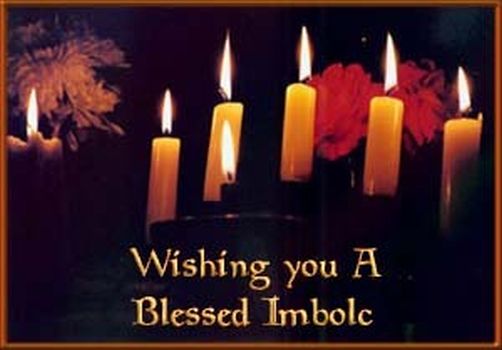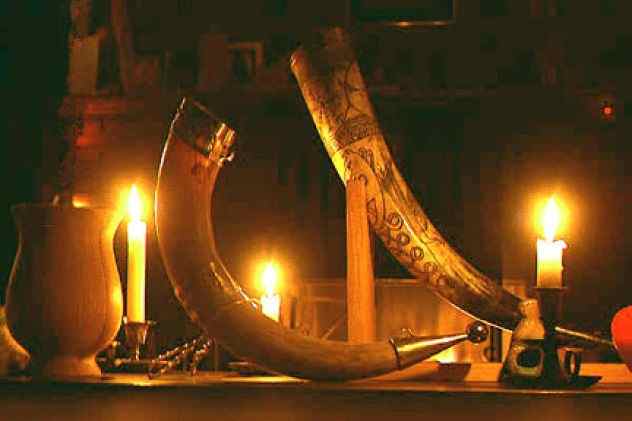There are 8 basic mystical festivals that have been celebrated around the world for thousands of years. The names and specific dates may be modified in different cultures, and some of the rituals associated with them may differ – but the underlying theme stays the same.
They are:
The Spring Equinox or Ostara in March – symbolizing re-birth and renewal
Beltaine or May Day, which occurs about 6 weeks after the Equinox – symbolizing spiritual union and fertility
The Summer Solstice or Lithia in June – symbolizing the light of consciousness and spiritual awakening
Lammas or Lughnasadh, which occurs 6 weeks after the Solstice – symbolizing the harvest and first fruits
The Autumn Equinox or Mabon in September – symbolizing balance and transformation
Samhain or Halloween, which occurs about 6 weeks after the Equinox – symbolizing the final harvest and remembrance of things past
The Winter Solstice or Yule in December – symbolizing the triumph of the light and the birth of the divine
And Imbolc or Candlemas, which occurs about 6 weeks after the Solstice – symbolizing change and setting new goals
This year Ostara, the Spring Equinox is on March 20th.
This has been a tough winter. Although we saw the first promise of spring at Imbolc in the swelling buds, there were still nights of frost and darkness ahead. But now, finally, spring has arrived and hopefully the dark cold days of winter are past.
Observing holidays is a tradition intertwined with spirituality. The depths of humanity’s need for holy days and the biological connection to the earth’s yearly cycles are subjects worthy of more study.
The spring equinox also known as Ostara, Easter, and St. Patrick’s Day, occurs in the middle of March in the Northern Hemisphere. It marks the beginning of Spring and the time when days and nights are of equal length.
It is important to remember that the dawning of spring has been observed for a long time in many cultures around the world. Traditions vary widely from one country to the next. Megalithic people on Europe’s Atlantic fringe calculated the date of the Spring Equinox using circular monuments constructed of huge stones. Germanic tribes associated it with the fertility goddess Ostara. The Mayans of Central America still gather at the pyramid at Chichen Itza which was designed to produce a “serpent” shadow on the Spring Equinox.
The Ancient Saxons held a feast day for their version of the fertility goddess, Eostre, on the full moon following the Equinox. Eostre is associated with the symbols of decorated eggs and hares.
The month of March contains holidays dedicated to all the great mother goddesses: Astarte, Isis, Aprhrodite, Cybele and the Virgin Mary. The goddess shows herself in the blossoms, the leaves on the trees, the sprouting of the crops, the mating of birds, the birth of young animals. In the agricultural cycle, it is time for planting. We are assured that life will continue.
March is also the start of the New Year in many traditions, and it is connected with the rebirth or resurrection of many divine sons and lovers of ancient gods and goddesses. Attis, Adonis, Osiris and Dionysus — who, like Christ, die and are reborn each year. These gods and heroes are typically seen as saviors of their people in some way, sometimes through sacrifice. They are often gods of vegetation, dying each year (at harvest) to be reborn in the spring.
Here are some Spring traditions from around the world:
Egypt:
The Festival of Isis was held in ancient Egypt as a celebration of spring and rebirth. Isis features prominently in the story of the resurrection of her lover, Osiris. Although Isis’ major festival was held in the fall, folklorist Sir James Frazer says in The Golden Bough that “We are told that the Egyptians held a festival of Isis at the time when the Nile began to rise… the goddess was then mourning for the lost Osiris, and the tears which dropped from her eyes swelled the impetuous tide of the river.”
Iran:
In Iran, the festival of No Ruz or Nawruz, the Persian New Year, begins shortly before the vernal equinox. The phrase “No Ruz” actually means “new day,” and this is a time of hope and rebirth. Typically, a lot of cleaning is done, old broken items are repaired, homes are repainted, and fresh flowers are gathered and displayed indoors. The Iranian new year begins on the day of the equinox, and typically people celebrate by getting outside for a picnic or other activity with their loved ones. No Ruz is deeply rooted in the beliefs of Zoroastrianism, which was the predominant religion in ancient Persia before Islam came along.
Ireland:
In Ireland, St. Patrick’s Day is celebrated on March 17. St. Patrick is known as a symbol of Ireland. One of the reasons he’s so famous is because he drove the snakes out of Ireland. What many people don’t realize is that the snake was actually a metaphor for the early Pagan faiths of Ireland. St. Patrick brought Christianity to the Emerald Isle, and did such a good job of it that he practically eliminated Paganism from the country.
Italy:
For the ancient Romans, the Feast of Cybele was an important spring ritual. Cybele was a mother goddess who was at the center of a Phrygian fertility cult, and eunuch priests performed mysterious rites in her honor. Her lover was Attis (who some say was born of a virgin on December 25th), and her jealousy caused him to castrate and kill himself. His blood was the source of the first violets, and divine intervention allowed Attis to be resurrected by Cybele, with some help from Zeus. In some areas, there is still an annual celebration of Attis’ rebirth and Cybele’s power observed from March 15 to March 25. A pine tree, which represented Attis, was chopped down, wrapped in a linen shroud, decorated with violets and placed in a tomb in the temple. On the Day of Blood or Black Friday, the priests of the cult gashed themselves with knives as they danced ecstatically, sympathizing with Cybele in her grief and helping to restore Attis to life. Two days later, on Sunday, a priest opened the sepulchre at dawn, revealing that it was empty and announcing that the god was saved. This day was known as Hilaria or the Day of Joy, a time of feasting and merriment. Attis, by his self-mutilation, death, and resurrection represents the fruits of the earth, which die in winter only to rise again in the spring.
Judaism:
One of Judaism’s biggest festivals is Passover, which takes place in the middle of the Hebrew month of Nisan. It was a pilgrimage festival, and commemorates the exodus of the Jews from Egypt after centuries of slavery. A special meal is held, called the Seder, and it is concluded with the story of the Jews leaving Egypt, and readings from a special book of prayers. Part of the eight-day Passover traditions include a thorough spring cleaning, going through the house from top to bottom.
Greece:
Anyone who has been in Greece at Easter time, especially among the more remote peasants, must have been struck by the emotion of suspense and excitement, with which they wait for the announcement, “Christos aneste,” “Christ is risen!” and the response “Alethos aneste,” “He has really risen!” Some of the older peasants still believe that “If Christ does not rise tomorrow we shall have no harvest this year.” Not quite the Eccleisiastical concern for the resurrection, but one that indicates the origins of the festival in antiquity and the general need for a vegetation savior god.
Resurrection from the Dead
The resurrection theme connected to spring and Easter is shared and possibly inspired by older non-Christian traditions. The name Easter comes from the Saxon dawn-goddess Eostre, whose festival was celebrated on spring equinox. The date of Easter is still determined by the old moon cycle. It is always the first Sunday on or after the first full moon after the spring equinox.
Compare the ancient Roman story of Attis described above with the Easter story: On Good Friday, Christ is crucified, a willing sacrifice. He is wrapped in a shroud and placed in a tomb. Altars are stripped, candles extinguished to represent the darkness of the grave. But on Easter Sunday, light springs from darkness, Christ rises from the tomb. If you’ve never attended an Easter vigil, I highly recommend it. (I usually go to a Greek Orthodox church, so I don’t know what the ceremony is like in other Christian churches.) Shortly before midnight all the lights are extinguished and the thronged church is dark and silent. Everyone is holding an unlit candle. The priest lights the Paschal candle, which has been ritually blessed and inscribed with the year. He then lights the candles of those nearby, who light the candles of their neighbors, until the church is ablaze with light and filled with song.
The spring equinox is a time of re-birth and renewal. It is the time when the Light has won out over the Darkness and begins to grow in strength and power. It is a time when the World begins to wake up after the long, cold night of winter. Many of us feel, not only the physical impulses connected with spring but also, the spiritual rumblings deep within us as our souls seek to reach out and embrace the resurrected Light. This spring I encourage you to allow yourself to become conscious to the great mystery of Light that starts as an inner glow but soon expands to illuminate the universe.
Happy Spring!




































































